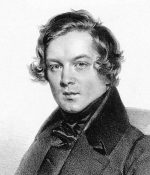Robert Schumann (1810-1856) was a German composer and pianist known for his profound influence on Romantic music. Schumann co-founded the influential music journal "Neue Zeitschrift für Musik" and composed a wide range of music, including piano works, lieder (art songs), and symphonies. His passionate relationship with Clara Wieck, a talented pianist and composer, played a significant role in his life. Schumann was a virtuoso pianist, and his piano compositions are an integral part of his oeuvre. Pieces like "Carnaval," "Kinderszenen," and the Piano Concerto in A Minor remain staples of the piano repertoire.
@ 2007-2024 All Rights Reserved | WrittenMelodies.com

